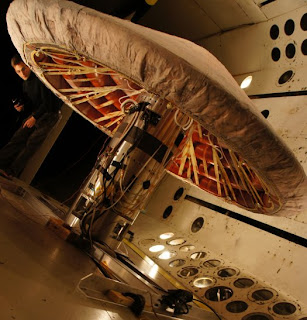Thanks to the rapid development of technology over the last few decades, we’ve seen dramatic changes in the way technology impacts our daily lives. Today, a person can get their degree by taking online classes and newspapers now have the ability to share stories with the world within minutes after an event occurs. With technology developing at such a fast pace, it appears as if it can do almost anything. Can technology teach though? As computers continue to get not only smarter but also cheaper, it seems entirely possible that they could eventually replace teachers. Computers and technology already serve as teaching aides. Whether it’s
teaching children their ABC’s or helping a college freshman memorize the periodic table, technology for educational purposes is already available. There is one glaring problem with computers being used to teach though, and that’s intelligent communication.
teaching children their ABC’s or helping a college freshman memorize the periodic table, technology for educational purposes is already available. There is one glaring problem with computers being used to teach though, and that’s intelligent communication.
A computer can regurgitate information and teach new material, but it presently lacks the ability to truly interact. Perhaps Kim Bochicchio, an English teacher from Pennsylvania, sums it up best in a short piece published by the National Council of Teachers of English. Bochicchio states, “only an English teacher can properly grade an essay and conference with a student afterward.” Bochicchio presents a valid point discussing the shortcomings in computers and the way they interact with humans now. “Now,” being the keyword.
In the near future, it’s entirely feasible that computers could be used to teach. Technology is already on the brink of being able to communicate intelligently, such as in the case of Apple’s Siri and IBM’s Watson. Bochicchio’s point about computers not being able to conference with a student could soon be rendered incorrect. Over the next decade, it seems likely that computers will advance to the point of being able to have natural conversations. When that happens, there’s no reason that they won’t be able to teach. A computer that can pull information from the Internet in an accurate manner and do so while conversing naturally with a student would possibly be the best teacher that the world has ever seen, but there is still one pitfall.
The final step for technology to replace teachers has to do with another aspect of intelligent communication. For computers to be able to teach, they need to be able to adjust to the student. Not everyone learns in the same manner, so it’s necessary for a computer to have the ability to alter its teaching style. Thus a computer that completely replaced teachers would need to have the ability to read into our subliminal methods of communication. A computer that can have a natural conversation with a student and pull endless amounts of data from the Internet still needs to be able to read into hints from the student’s facial expressions or body language in order to adjust its teaching style. However, strides are being taken to improve this aspect of computer communication. In 2008, a Ph.D. student namedJacob Whitehill developed a system to alter a computer’s methods on the go, based on facial expressions. If this technology were in place along with natural conversation and the ability to pull information from the internet, then the computer would be doing everything that a teacher can do as well.
So, it seems possible for teachers to be replaced by computers, but will they? It’s still widely open to speculation. We can guess that the proper technology to do so will be in place within the next decade or so. It is highly possible. However, whether computers will be sophisticated enough to teach efficiently remains in question. It may be that in the future, technology is only good for low-level learning, but we do need to keep an open mind to the possibility that teachers might be replaced by technology.

































